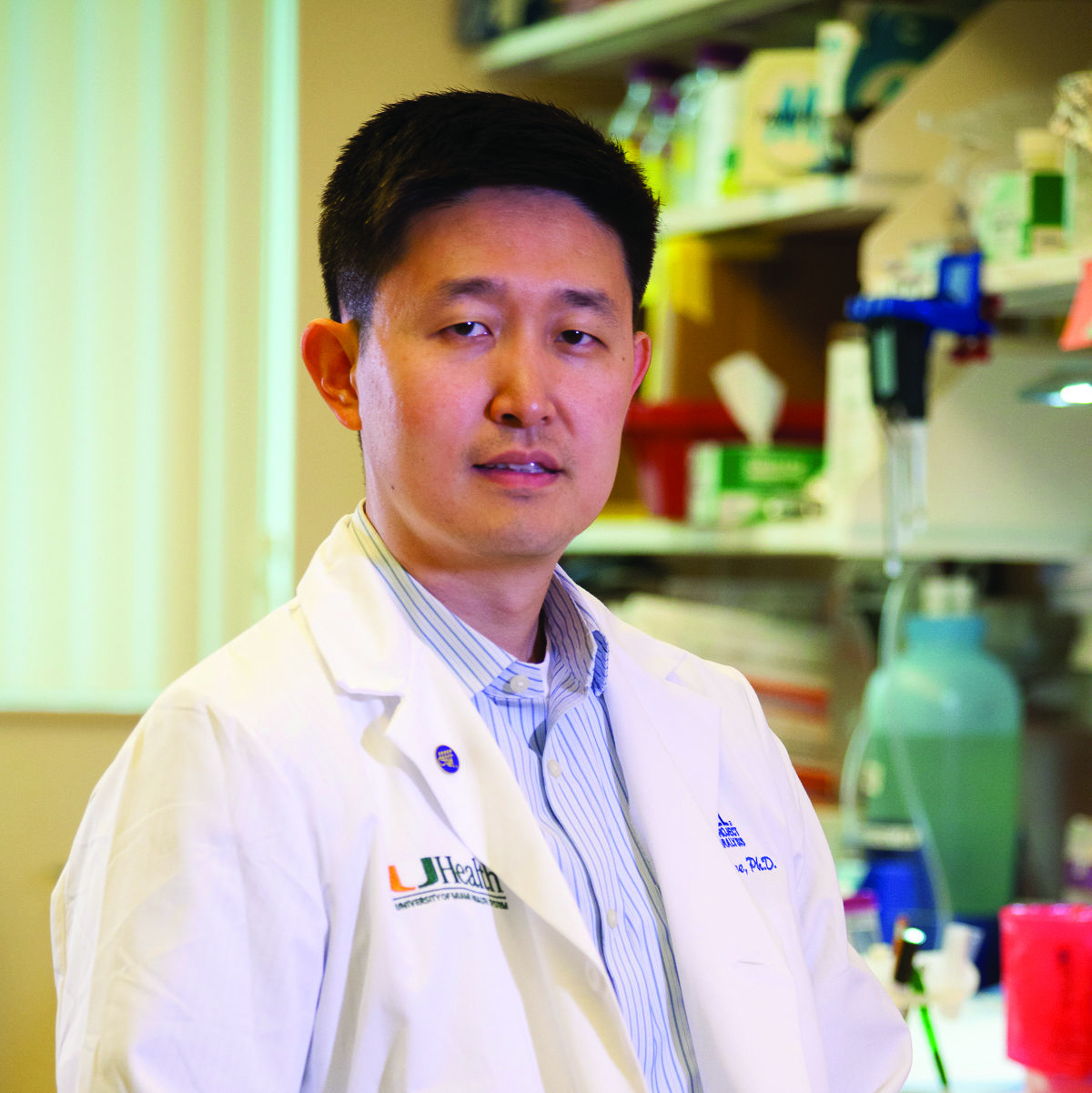Miami Project Researchers, with Jae Lee, Ph.D., Professor, Department of Neurological Surgery and The Miami Project and colleagues, published a manuscript titled Single-cell Analysis of the Cellular Heterogeneity and Interactions in the Injured Mouse Spinal Cord in the Journal of Experimental Medicine. The paper discusses how the team was successful in isolating every major cell type known to be present at the spinal cord injury (SCI) site. This work gave the researchers valuable insight into the wound healing process and interactions at the single-cell level, so they can better understand of the process.
The wound healing process that occurs after spinal cord injury is critical for maintaining tissue homeostasis (optimal functioning) and limiting tissue damage. But the process eventually results in a scar-like environment that is not conducive to regeneration and repair following SCI. The research team was looking to better understanding this dichotomy which is critical to developing effective therapeutics that target the appropriate pathobiology. A major challenge to the process has been the large cellular heterogeneity that results in immensely complex cellular interactions. In this study, the team used single-cell RNA sequencing to assess virtually all cell types that comprise the mouse spinal cord injury site. In addition to discovering novel subpopulations, they identified signaling pathways that are predicted to regulate specific cellular interactions during the development of new blood vessels (angiogenesis), gliosis (a change to glial cells in response to damage), and fibrosis (scar tissue). The researchers collected a dataset that is a valuable resource and provides novel mechanistic insight into the pathobiology of not only SCI but also other traumatic disorders of the central nervous system (CNS).
“Until now, we have been investigating gene expression of the injury site using bulk tissue. But, like people, every cell is different, and studying them at the single cell level provides a molecular map of the injury site with unprecedented detail. We and other researchers can now use this map to navigate the complex cellular interactions at the injury site in hopes of discovering a targeted therapy,” said Dr. Lee.
The overall goal of this study was to generate a detailed transcriptome, (the complete set of RNA transcripts that are produced by the genome under specific circumstances or in a specific cell profile) to gain insight into the complex cellular heterogeneity and interactions that occur at the SCI site. The team was successful in isolating every major cell type known to be present at the injury site, which provided an opportunity to assess the wound healing process with much less bias than prior studies that focused on specific cell types and molecules.
The single cell RNA sequencing dataset obtained by the researchers is the first comprehensive transcriptomic analysis that captures virtually all cells that contribute to the injury site pathology acutely after SCI. This dataset can be used to assess not only heterogeneity of the cells that comprise the injury site but also signaling pathways that underlie cellular interactions at the injury site. The team’s analysis revealed novel insight into myeloid cell heterogeneity, and specific signaling pathways by which unique myeloid subtypes contribute to the wound healing process, including angiogenesis and scar formation. These new insights can help decode the complex processes that underlie SCI pathobiology. Since much of the data are still computational models, the next step is to perform the biological validation studies that will further solidify the molecular map. In addition, similar studies are needed using human tissue to develop a more translational model of human spinal cord injury pathology.
The research team consisted of Lindsay M. Milich, James S. Choi, Christine Ryan, Susana Cerqueira, PhD, Sofia Benavides, Stephanie Yahn, PhD, Pantelis Tsoulfas, PhD, and Jae Lee, PhD. This study was funded by National Institute of Neurological Disorders and Stroke grant R01NS081040 (to J.K. Lee), University of Miami SAC Award UM SIP 2019-2 (to J.K. Lee), National Institute of Neurological Disorders and Stroke grant F31NS115225 (to C. Ryan), the Miami Project to Cure Paralysis, the Buoniconti Fund to Cure Paralysis, a generous gift from the Craig H. Neilsen Foundation (J.K. Lee), and National Institutes of Health grant 1S10OD023579-01 for the VS120 Slide Scanner housed at the University of Miami Miller School of Medicine Analytical Imaging Core Facility.

